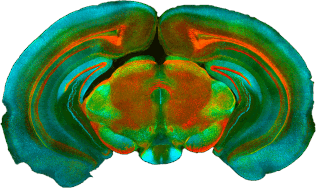How do new neurons integrate into the adult brain? In collaboration with the lab of Magdalena Götz (Helmholtz Center Munich and Physiology Department, LMU), we replaced lost neurons by transplanting embryonic neurons into the visual cortex of adult mice. Our experiments show that these transplanted neurons mature into bona fide pyramidal cells, with all structural properties that characterize these cells including the anatomically correct connections. We then tested with genetically encoded calcium indicators whether transplanted neurons also become functionally integrated into the network. Indeed, these cells showed visually driven responses that were initially broadly and variably tuned, but then refined over the course of several weeks. Eventually, transplanted neurons displayed levels of orientation and direction selectivity that were indistinguishable from resident neurons in the host visual cortex. Thus, grafted neurons can integrate with great specificity and functional reliability into neocortical circuits that normally never incorporate new neurons in the adult brain (Falkner et al., Nature, 2016).



